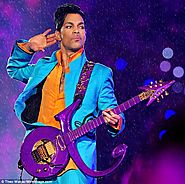-
About
- About Listly
- Community & Support
- Howto
- Chrome Extension
- Bookmarklet
- WordPress Plugin
- Listly Premium
- Privacy
- Terms
- DMCA Copyright
- © 2010-2025 Boomy Labs

 Hugo Larcher
Hugo Larcher
Listly by Hugo Larcher
The Guns N' Roses guitarist has written some of the most memorable riffs of all time, while his solos - on November Rain, Sweet Child o' Mine and countless others - will go down in history. Not on Guns N' Roses anymore but in terms of technique and creativity he seems to be getting better and better, one of the last beacons of Rock & Roll.
What he played was fucking loud but also incredibly lyrical and expert. He managed to build this bridge between true blues guitar — the kind that Eric Clapton had been battling with for years and years — and modern sounds, the kind of Syd Barrett-meets-Townshend sound, the wall of screaming guitar sound that U2 popularized. He brought the two together brilliantly. And it was supported by a visual magic that obviously you won't get if you just listen to the music. He did this thing where he would play a chord, and then he would sweep his left hand through the air in a curve, and it would almost take you away from the idea that there was a guitar player here and that the music was actually coming out of the end of his fingers.
In the 1970s, there was no bigger rock group in the world than Led Zeppelin and no greater god on six strings than Zeppelin's founder-captain Jimmy Page. Nothing much has changed. The imperial weight, technical authority and exotic reach of Page's writing and playing on Zeppelin's eight studio albums have lost none of their power: the rusted, slow-death groan of Page's solo, played with a violin bow, in "Dazed and Confused," on Zeppelin's 1969 debut; the circular, cast-iron stammer of his riffing on "Black Dog," on the band's fourth LP; the melodic momentum and chrome-spear tone of his closing solo in Zeppelin's most popular song, "Stairway to Heaven." Page actually built Zeppelin's sound and might from a wide palette of inspirations and previous experience.
When the lead singer of your band is Freddie Mercury, you're lucky if anybody notices your guitar playing at all. But Brian May was every bit as flamboyant as his frontman in terms of getting attention, and he defined the sound of Queen with his upper-register guitar shrieks. May juiced the treble all the way for a clear and piercing tone, playing solos with grandeur and campy feather-boa humor. From "Killer Queen" to "Bohemian Rhapsody," May offered counterpoint to Mercury's operatic falsetto, pushing glitter rock over the top until the sound was sheer heart attack. He will, he will rock you.
Dire Straits founder and solo artist Mark Knopfler emerged at a time when guitar virtuosos were spurned by punks and New Wavers. Yet from the first stinging notes of "Sultans of Swing," Knopfler's roots-based approach and supple, burnished leads found almost universal appeal. A fingerpicker who favors Fender Stratocasters — a Knopfler-designed Strat was introduced in July as part of Fender's "Artist Series" — he's known for his rich tone, sinuous melodicism and rangy, fluid solos. "My sound is fingers on a Strat," he once said.
Roger Waters gave Floyd conceptual weight and lyrical depth, but Gilmour brought drama. His solos exuded a slow-burn stateliness that could be soulful ("Comfortably Numb") or evoke sci-fi dreamscapes ("Echoes") first glimpsed by the man he succeeded, acid casualty Syd Barrett.
Martin's style can be described as rock with blues and heavy metal influences. As stated before, he studied jazz and classical music. This study can be recognized in many of his songs. A lot of his lead is played in Minor Pentatonic, but he also ventures into various modes to give his soloing a jazzy/heavier sound. Martin is also a very talented rhythm guitarist as well. He plays technical riffs that can almost be categorized as metal, often playing in harmony with a flute. His work in Jethro Tull can be described as some of the most magical moments of Rock & Roll history and hidden in there you can find some of the best riffs ever.

Prince Rogers Nelson was an American singer-songwriter, multi-instrumentalist, and record producer. He was a musical innovator and known for his eclectic work, flamboyant stage presence, extravagant dress and makeup, and wide vocal range. His music integrates a wide variety of styles, including funk, rock, R&B, new wave, soul, psychedelia, and pop. He has sold over 100 million records worldwide, making him one of the best-selling artists of all time. He won seven Grammy Awards, a Golden Globe Award, and an Academy Award for the film Purple Rain. He was inducted into the Rock and Roll Hall of Fame in 2004, his first year of eligibility. Rolling Stone ranked Prince at number 27 on its list of 100 Greatest Artists—"the most influential artists of the rock & roll era".
Young specializes in the sort of filthy solos that first made people characterize the blues as the devil's music. His playing is drenched in testosterone, booze and punk venom, but it's the blues swing that keeps AC/DC's hard rock trend-proof.
Joe Perry has spent most of his three decades in Aerosmith being compared to Keith Richards: as the guitar pirate and songwriting foil to Aerosmith's own Jagger, Steven Tyler. But Perry's admiration for both Richards' riffing and Jeff Beck's screaming leads was grounded in blues and R&B: Perry's immortal pimp-roll lick in "Walk This Way" was a natural progression from Aerosmith's early covers of Rufus Thomas' "Walking the Dog" and James Brown's "Mother Popcorn." And everything Perry loves about Jimi Hendrix's iridescent lyricism comes through in Aerosmith's "Dream On," one of the only power ballads worthy of the term.
